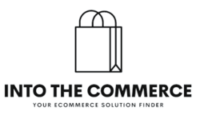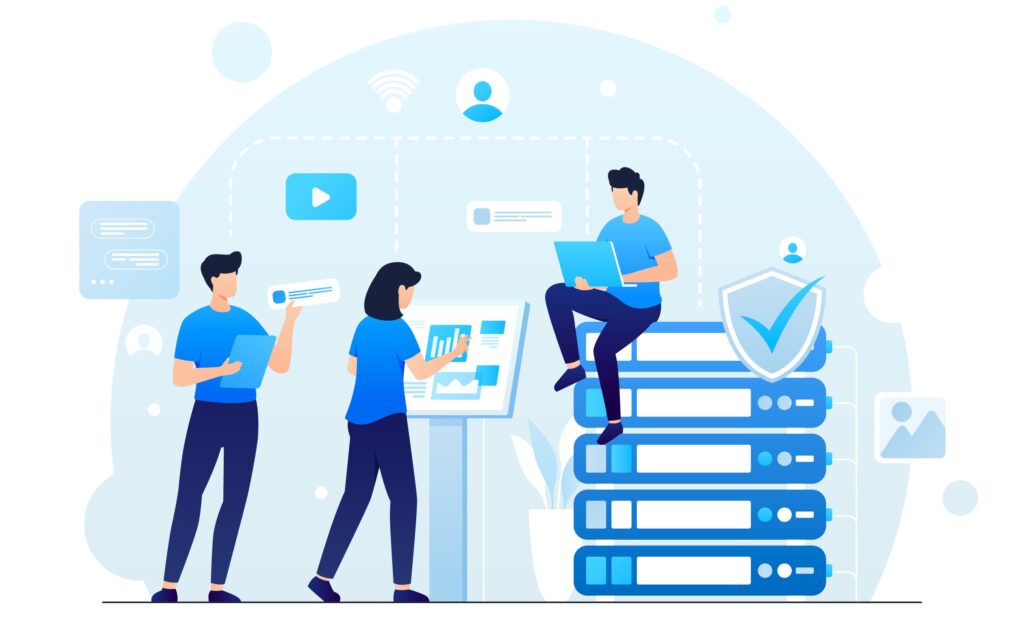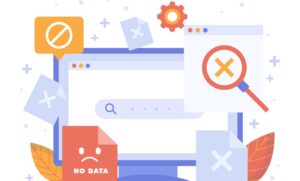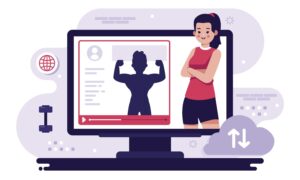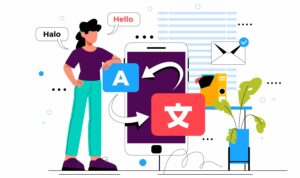So the way we interact with software has seen a dramatic shift. Enter “Software-as-a-Service” or SaaS—a term that goes beyond mere industry jargon. SaaS represents a revolutionary change in how software is delivered and used, moving away from traditional installations and towards a more flexible, cloud-based model. In this article, we’ll take you on a journey to uncover what SaaS really means, how it functions, and why it has become a transformative force in software.
Whether you’re new to the concept or looking to deepen your understanding, this guide will illuminate the impact of SaaS on the tech landscape.
What is Software-as-a-Service (SaaS)?
Software as a Service (SaaS) is a cloud computing model that transforms how you access and use software. Instead of the traditional approach of downloading and installing software on your computer or server, SaaS delivers applications over the internet on a subscription basis. This means you access the software through a web browser, making it available from virtually any device with an internet connection.
With SaaS, the software is hosted and managed by a third-party provider. This setup eliminates the need for you to handle installations, updates, or infrastructure management. The provider takes care of all these aspects, ensuring that you always have the latest features and security enhancements without the usual technical hassles. In essence, SaaS simplifies your software experience by offering a convenient, scalable, and maintenance-free solution.
How does SaaS work?
Understanding how software-as-a-service (SaaS) operates can help you appreciate its efficiency and convenience. The process behind SaaS is elegant in its simplicity and involves several key components:
Cloud Hosting
At the core of SaaS is cloud hosting. SaaS applications are hosted on remote servers that are typically located in secure data centers. These servers are managed and maintained by the SaaS provider, ensuring that the infrastructure is robust, reliable, and secure. You don’t need to worry about physical servers or hardware; instead, you access your software through the cloud, which means it’s always available as long as you have an internet connection.
Subscription Access
SaaS operates on a subscription model. This means you pay a recurring fee, often on a monthly or yearly basis, to access the software and its features. This subscription model is designed to be flexible, allowing you to choose a plan that fits your needs and budget. The subscription fee covers not just the use of the software but also the ongoing maintenance and support provided by the SaaS provider.
Web-Based Access
One of the standout features of SaaS is how you access the software. Most SaaS applications are accessed via a web browser, which means you don’t need to install anything on your local device. Simply log in through your browser, and you can use the software from anywhere. Some SaaS providers also offer dedicated applications for enhanced functionality or offline access, but the core idea remains the same: ease of access from multiple devices without complex installations.
Centralized Updates
With traditional software, keeping everything up-to-date can be a hassle, often requiring manual updates and dealing with compatibility issues. SaaS changes this by centralizing updates. The SaaS provider handles all updates, maintenance, and security patches. This means that you always have access to the latest version of the software with new features and security improvements automatically applied. You don’t need to worry about downloading patches or upgrading your system; it’s all managed on the provider’s end.
SaaS simplifies the way you use and manage software. By hosting applications in the cloud, offering subscription-based access, and handling updates centrally, SaaS delivers a seamless and efficient user experience. This approach not only reduces the need for physical infrastructure but also ensures that you have the latest tools and features at your fingertips, all while enjoying the flexibility of web-based access.
Why does Software-as-a-Service matter?
Software-as-a-service (SaaS) has become a game-changer for businesses of all sizes, offering numerous advantages that make it a compelling choice. Here’s why SaaS matters and how it can benefit your business:
Cost Efficiency
Traditional software often demands hefty upfront investments for licenses and hardware. In contrast, SaaS operates on a subscription model that spreads costs over time. This approach eliminates the need for large capital expenditures on infrastructure and hardware. With SaaS, you pay a predictable monthly or annual fee, which makes budgeting easier and frees up resources that can be used for other critical areas of your business.
Accessibility
One of the most significant advantages of SaaS is its accessibility. With just an internet connection, you can access your software from virtually anywhere. This flexibility is particularly valuable in today’s remote work environment, where team members might be spread across different locations. SaaS ensures that you and your team can stay connected and productive, whether you’re working from the office, home, or on the go.
Automatic Updates
Keeping software up-to-date can be a cumbersome task, often involving manual installations and downtime. SaaS providers handle all updates and maintenance on their end, ensuring that you always have access to the latest features and security patches without lifting a finger. This means you benefit from continuous improvements and enhanced security without the usual hassle of software upgrades.
Scalability
Business needs can change rapidly, and SaaS solutions are designed to scale with you. Whether you’re growing your team or adjusting to changing project requirements, SaaS makes it easy to add or reduce users and features as needed. This scalability ensures that your software solution can adapt to your business’s evolving demands, allowing you to stay agile and responsive.
Collaboration
Many SaaS applications are built with collaboration at their core. Tools like Chanty and Pumble allow for real-time sharing and editing of documents, making teamwork more seamless. These features enhance productivity by enabling your team to work together efficiently, regardless of their physical location. Real-time updates and collaborative tools foster a more dynamic and integrated working environment.
By understanding these benefits, you can see why SaaS is not just a trend but a crucial element in modern business operations. Its cost efficiency, accessibility, automatic updates, scalability, and collaborative features make it a valuable asset in today’s fast-paced digital landscape.
Common Examples of SaaS
Software-as-a-service (SaaS) has become a fundamental part of our digital routines, offering convenient and scalable solutions across various domains. Here’s a look at some common SaaS examples you’re likely to encounter:
Office Suites
Office productivity has been revolutionized by cloud-based suites like SoftMaker Office and WordPerfect Office. These platforms offer familiar applications such as Word, Excel, and PowerPoint through a web browser, allowing you to access your documents from anywhere and collaborate in real-time with colleagues. This accessibility simplifies document sharing and editing, making remote work and teamwork more efficient.
Customer Relationship Management (CRM)
Managing customer relationships and sales pipelines is crucial for any business. SaaS platforms like Salesforce, HubSpot, and Zoho CRM provide cloud-based tools that help you track interactions, manage leads, and analyze sales data. These CRM systems are designed to improve customer engagement and streamline sales processes, making it easier for you to maintain and grow your client base.
Project Management
When it comes to organizing tasks and collaborating on projects, SaaS tools like Asana, Trello, and Monday.com are invaluable. These platforms offer web-based project management solutions that help you plan, track progress, and communicate with your team. With features such as task assignments, deadlines, and progress tracking, these tools can enhance productivity and ensure that projects stay on track.
Collaborative Software
Effective communication is key to any successful team, and SaaS solutions like Slack and Microsoft Teams make it easier to stay connected. These platforms facilitate team communication through instant messaging, file sharing, and video calls. By centralizing your team’s conversations and collaboration in one place, these tools help streamline workflows and improve overall efficiency.
Accounting and Finance
Managing finances is simplified with cloud-based accounting solutions like QuickBooks Online and Xero. These platforms offer features for invoicing, expense tracking, and financial reporting, allowing you to manage your business’s finances from anywhere. The convenience of cloud access means you can handle accounting tasks on the go, without the need for complex software installations.
Video Conferencing
In the realm of remote communication, Zoom and Webex have become go-to solutions for video conferencing. These SaaS tools provide robust features for hosting virtual meetings, webinars, and collaborative sessions, helping you stay connected with colleagues and clients regardless of your location.
These examples highlight how SaaS has integrated into various aspects of daily and business life, providing flexible and efficient solutions to meet diverse needs.
Challenges and Considerations of SaaS Model
While software-as-a-service (SaaS) can revolutionize how you approach software solutions, it’s important to navigate its challenges and considerations carefully.
Data Security
One of the foremost concerns with SaaS is the security of your sensitive data. When you use a third-party provider, you’re placing a significant amount of trust in their ability to protect your information. It’s crucial to choose providers with a strong track record in security, offering features like encryption, regular security audits, and compliance with data protection regulations. Evaluating their security practices and understanding how they handle breaches can help you safeguard your data effectively.
Dependency
Relying on SaaS means your operations are linked to an external service. This dependency raises questions about what happens if the service experiences downtime or if you want to switch to a different provider. Ensure that your provider has a robust disaster recovery plan and offers clear service level agreements (SLAs) outlining uptime guarantees. Additionally, having a contingency plan for migration or data retrieval can minimize disruptions in case you need to make changes.
Cost Over Time
Although SaaS can significantly reduce upfront costs by eliminating the need for on-premises infrastructure, the subscription fees can add up over time. It’s essential to consider not only the immediate savings but also the long-term financial implications. Regularly reviewing your subscription plan and evaluating whether it still meets your needs can help you manage costs effectively and avoid unnecessary expenses.
Integration
Another critical aspect to consider is how well the SaaS solution integrates with your existing systems. Seamless integration is key to ensuring a smooth transition and maintaining operational efficiency. Assessing compatibility with your current software and understanding any potential challenges in integrating new tools can help you avoid costly disruptions and ensure a cohesive workflow. By addressing these challenges thoughtfully, you can make the most of SaaS while mitigating potential risks.
Conclusion
Software as a Service, or SaaS, is more than just a technological buzzword; it’s a fundamental shift in how we access and use software. Its cost-efficiency, accessibility, and automatic updates have made it a game-changer in the software industry. While it’s not without its challenges, the benefits of SaaS are clear, making it a prominent player in the modern digital landscape. Whether you’re using cloud-based office software, a CRM system, or project management tools, chances are you’ve already experienced the transformative power of SaaS. As technology continues to advance, SaaS is poised to play an even more significant role in shaping our digital future.
